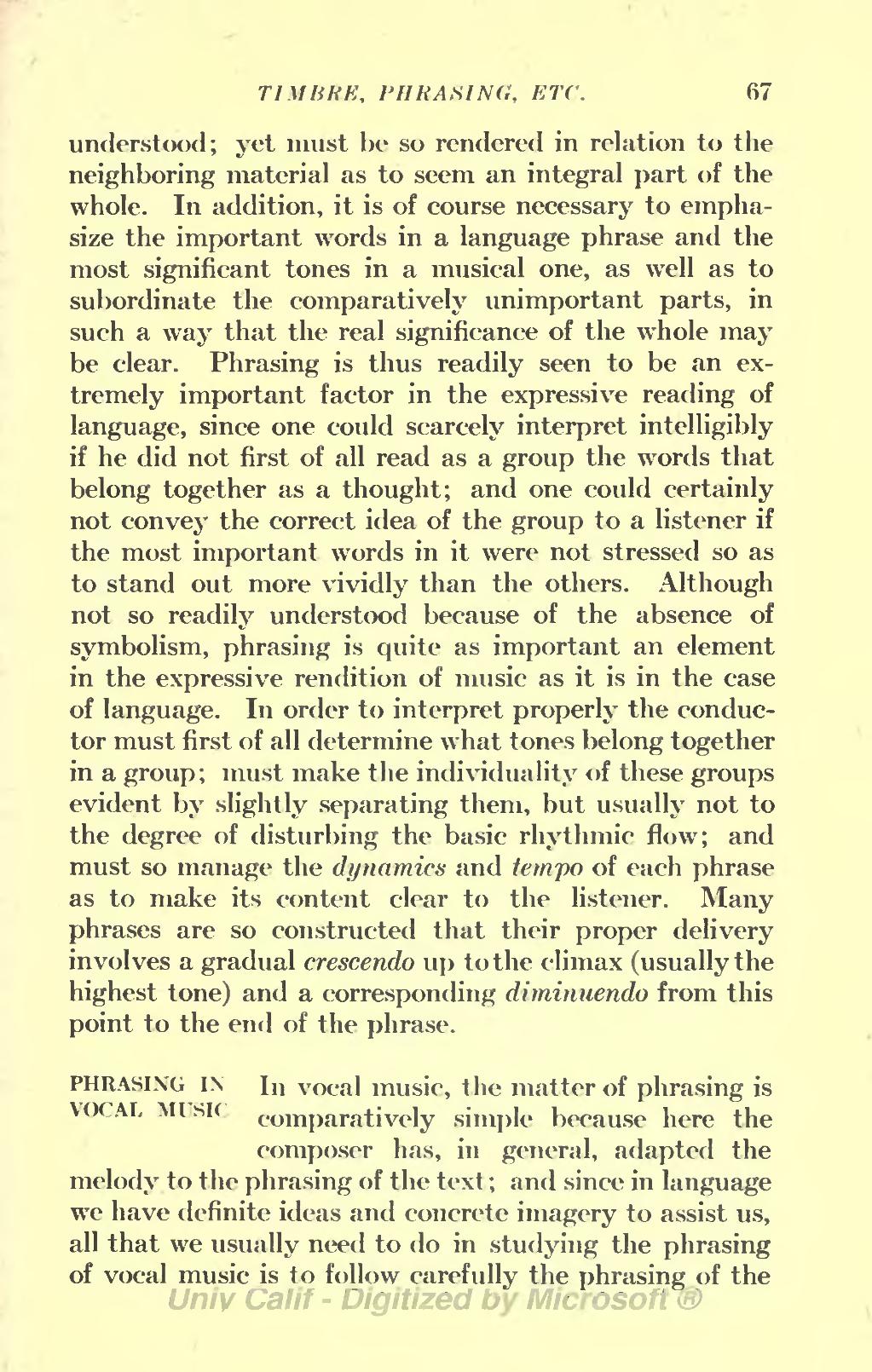understood; yet must be so rendered in relation to the neighboring material as to seem an integral part of the whole. In addition, it is of course necessary to emphasize the important words in a language phrase and the most significant tones in a musical one, as well as to subordinate the comparatively unimportant parts, in such a way that the real significance of the whole may be clear. Phrasing is thus readily seen to be an extremely important factor in the expressive reading of language, since one could scarcely interpret intelligibly if he did not first of all read as a group the words that belong together as a thought; and one could certainly not convey the correct idea of the group to a listener if the most important words in it were not stressed so as to stand out more vividly than the others. Although not so readily understood because of the absence of symbolism, phrasing is quite as important an element in the expressive rendition of music as it is in the case of language. In order to interpret properly the conductor must first of all determine what tones belong together in a group; must make the individuality of these groups evident by slightly separating them, but usually not to the degree of disturbing the basic rhythmic flow; and must so manage the dynamics and tempo of each phrase as to make its content clear to the listener. Many phrases are so constructed that their proper delivery involves a gradual crescendo up to the climax (usually the highest tone) and a corresponding diminuendo from this point to the end of the phrase.
PHRASING IN VOCAL MUSICIn vocal music, the matter of phrasing is comparatively simple because here the composer has, in general, adapted the melody to the phrasing of the text; and since in language we have definite ideas and concrete imagery to assist us, all that we usually need to do in studying the phrasing of vocal music is to follow carefully the phrasing of thePage:Essentials in Conducting.djvu/79
TIMBRE, PHRASING, ETC.
67
